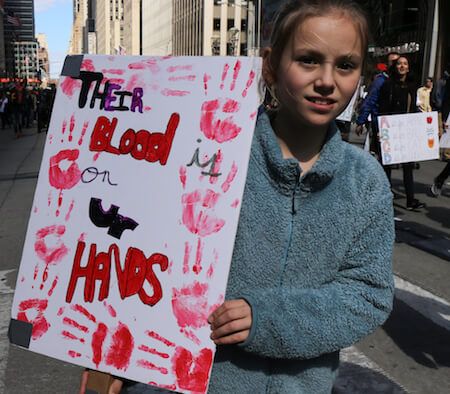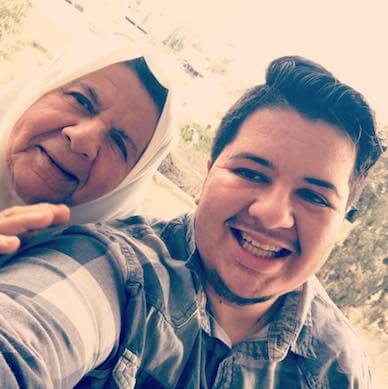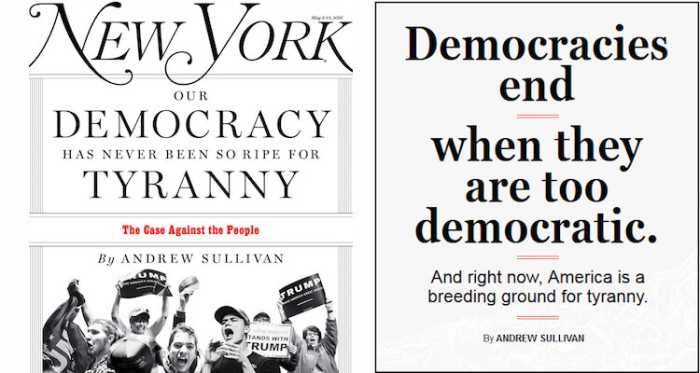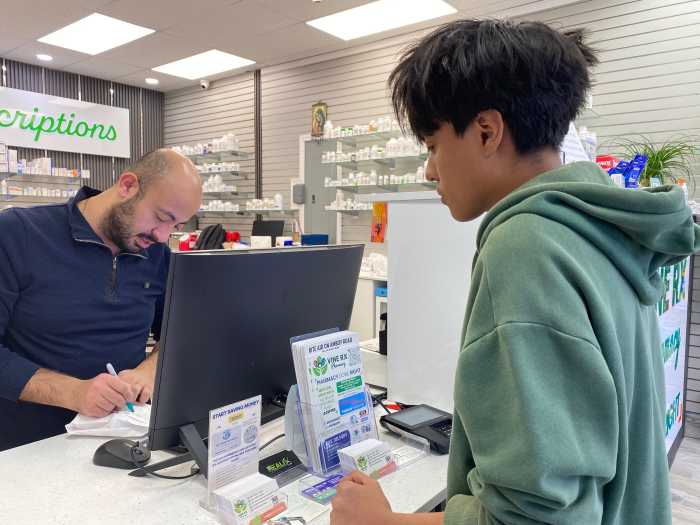Mary Lou Montalto, whose 14-year-old granddaughter Gina Montalto was killed in the Parkland, Florida, shootings in February, opened the program. | TEQUILA MINSKY
They couldn’t get to the epic march in Washington on March 24, but 175,000 New Yorkers rallied here in solidarity against gun violence in the March for Our Lives.
This youth-led movement was sparked by the February 14 shooting of 17 students and staff at Marjory Stoneman Douglas High School in Parkland, Florida. Nationwide, shaken school students are channeling their grief into action and speaking out against both gun violence and the easy availability of the weapons.
In Manhattan, the corridor of Central Park West from 62nd Street north past 86th Street filled in early Saturday morning in anticipation. When the program began shortly after at 11 a.m., the crowd relied on loud speakers set up at intervals to follow what proved an emotional series of speeches.
Hundreds of thousands of New Yorkers stand in solidarity with DC March for Our Lives
Leading off was Pelham resident Mary Lou Montalto, who spoke next to a poster placard that read: “My granddaughter could not make it here today, I’m here for her.” Montalto’s 14-year-old granddaughter, Gina Montalto, died in the Parkland shooting.
Marjory Stoneman Douglas High School student Sam Hendler read the names of those killed on February 14. | TEQUILA MINSKY
Youth were the center of the presentations. Two Marjory Stoneman Douglas survivors spoke movingly. In front of a backdrop montage of his fallen classmates’ photos, 16-year-old Sam Hendler read their names. His fellow student Meghan Bonner, her mother and sister at her side, tearfully gave her own harrowing account of that day. “The adults failed us,” Bonner said.
Meghan Bonner recounted the horror she experienced at Marjory Stoneman Douglas last month. | TEQUILA MINSKY
The rally included speeches from a survivor of last fall’s Las Vegas massacre; a librarian who saved students during the 2012 shootings at Sandy Hook; Nza-Ari Khepra, a student activist and co-founder of the Wear Orange campaign that brings awareness to gun violence; children — who are now young adults — of parents who died on 9/11; Nupol Kiazolu, the head of New York’s Black Lives Matter youth coalition; and members from Harlem Mothers SAVE and Guns Down Life Up, both local initiatives focused on gun violence reduction.
Many signs emphasized the importance of voting this coming November. | TEQUILA MINSKY
Ethan Rubin, an 11th grade student at Columbia Secondary School, entered Central Park West at 72nd with friends and his mom. They listened to the program through amplified speakers.
“There were just as many people as the Women’s March, but this felt more emotional,” he said, particularly noting the testimony from the Pelham grandmother and the Parkland survivors.
Governor Andrew Cuomo and Mayor Bill de Blasio were among those at the start of the march that proceeded down Central Park West after the program concluded. Also up front walking were Gays Against Guns with their Human Beings veiled in white, memorializing those lost to gun violence at the Pulse nightclub in Orlando two years ago and elsewhere. The Human Beings took the place of someone who would have wanted to be there that day but could not be.
The march, which headed toward Columbus Circle and then east to Sixth Avenue, continued for hours. The crowd was passionate and strikingly diverse in race, ethnicity, and age. Youth walked together amidst many families, some with small children perched on their parents’ shoulders. One toddler was spotted carrying a sign, and many a seasoned demonstrator walked with a cane. One veteran marcher’s sign read: “I marched in the ‘60s and I’m marching in my 60s.” Another placard — bright yellow with a flower, reminiscent of the peace movement — adapted a famous anti-war slogan and read: “Guns are not healthy for children and other living things.”
A family united in their determination to end gun violence. | TEQUILA MINSKY
On Central Park South, onlookers held similar signs, and some apartment windows along the marchers’ route displayed messages of solidarity. Actors were spotted in the crowd, and Paul McCartney told the media how he, too, had lost a good friend — John Lennon — to gun violence.
An adapted anti-war slogan from the 1960s was among the placards. | TEQUILA MINSKY
The multitude of handwritten signs — some simple, some clever — voiced a wide array of personal and nuanced expressions, all focused on the meaning of the day. There were clear themes, including the need to vote — “vote them out” or “I’m going to vote in 2020” — which is part of this movement’s agenda. Voter registration — for 2018, never mind 2020! — was available during the march. Teachers held signs speaking to the inappropriateness of guns, in any form, in schools. Many marchers pointed to the hypocrisy of regulating women’s reproduction but taking a hands-off approach to buying and selling guns.
Over and over, written messages as well as chants condemned easy access to guns in this country, its tragic consequences, the profit motive behind it, and the politicians unwilling to act to stop it.
The Human Beings from Gays Against Guns gathered in Pershing Square in Washington the same day, representing those who would like to have been there but could not be. | DONNA ACETO
Republican resistance on Capitol Hill to sensible gun laws was emphasized by DC protesters. | DONNA ACETO
The in the March for Our Lives in Washington. | DONNA ACETO
Demonstrators, here in New York and also in DC, pointed to the culpability of those resisting change. | TEQUILA MINSKY












































